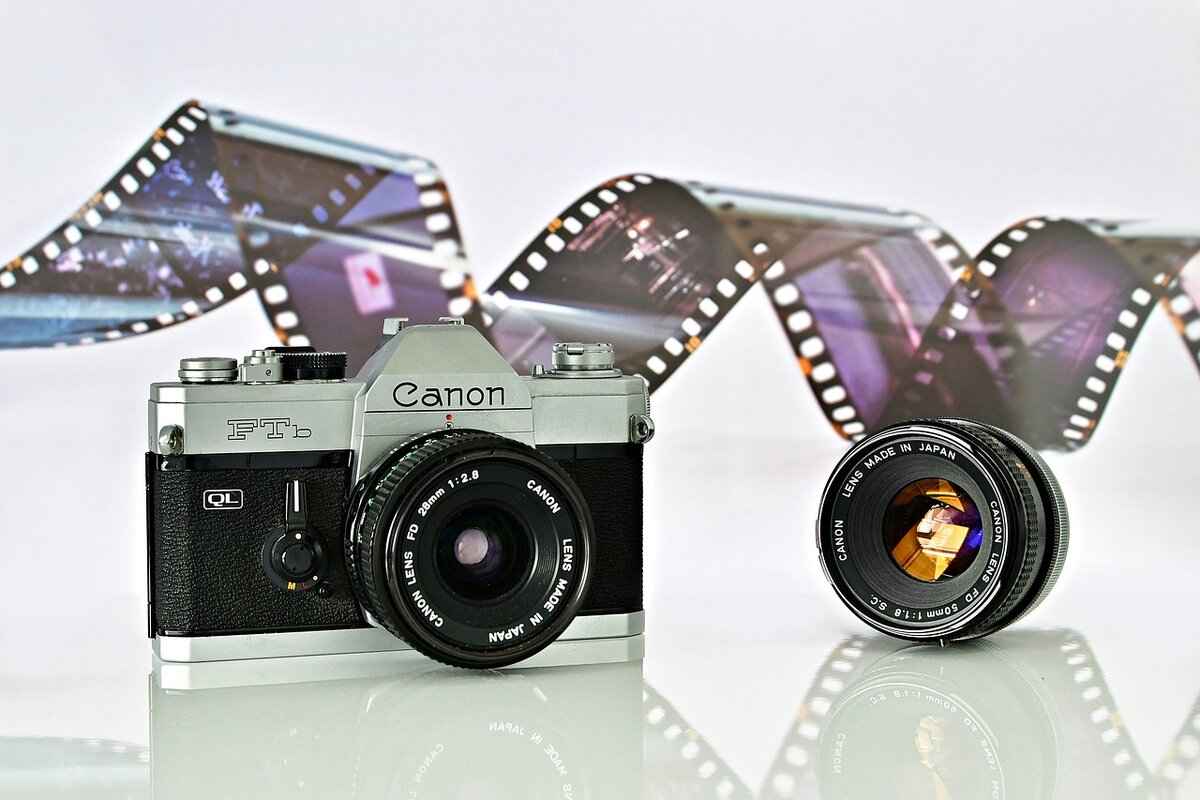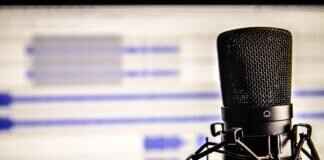Capturing high-quality audio is essential for enhancing the overall experience of your action camera footage. While stunning visuals can draw viewers in, clear audio is what keeps them engaged. This article delves into the techniques and equipment necessary for achieving professional audio quality with your action camera, focusing on the best microphones and settings to elevate your recordings.
Audio quality plays a pivotal role in storytelling. It creates an immersive experience, allowing viewers to feel as if they are part of the action. Poor audio can detract from even the most visually stunning footage, making it crucial to prioritize sound clarity. By investing in the right equipment and understanding audio settings, you can significantly improve the impact of your videos.
Selecting the right microphone can make a world of difference in your recordings. Here are some popular types:
- Lavalier Microphones: Ideal for interviews and dialogue, these clip-on mics offer hands-free convenience.
- Shotgun Microphones: Perfect for capturing sound from a specific direction, minimizing background noise.
- Handheld Microphones: Great for on-the-go interviews, providing flexibility and ease of use.
Understanding the differences between external and internal microphones is essential. Internal mics are built into the camera, making them convenient but often limited in sound quality. In contrast, external microphones can be positioned for optimal sound capture, providing superior audio quality.
External microphones offer enhanced sound quality, better noise cancellation, and flexibility in placement. They allow you to adapt to various recording environments, ensuring that you capture the best audio possible.
While internal microphones are easy to use, they often struggle in noisy environments, limiting their effectiveness. For high-quality recordings, relying solely on internal mics may not be sufficient.
Some top microphone choices for action cameras include:
- Rode VideoMicro: Compact and versatile, perfect for outdoor use.
- Zoom H1n: A portable recorder that delivers exceptional sound quality.
- Shure MV88: A digital stereo condenser microphone that connects directly to your device.
Configuring your action camera settings correctly is vital for achieving the best audio quality. Here are some key settings to consider:
Adjusting the audio gain settings can significantly impact your recordings. Setting the gain too high can lead to distortion, while too low can result in inaudible sound. Finding the right balance is crucial for clarity.
Choosing the appropriate sampling rate and bit depth can enhance audio fidelity. A higher sampling rate captures more detail, while a greater bit depth improves dynamic range, ensuring your recordings reflect the full spectrum of sound.
Wind noise can be a significant issue when recording outdoors. Here are some practical tips to minimize this interference:
Windshields and deadcats are essential accessories that can effectively reduce wind noise. These tools help to maintain audio clarity, even in blustery conditions.
Selecting a sheltered spot can mitigate wind noise, allowing for cleaner audio capture. Look for natural barriers like trees or buildings that can block wind.
In addition to microphones, various accessories can improve your audio recording experience:
Using an external audio recorder can provide higher quality sound and more control over your recordings, making it a valuable addition to your setup.
Investing in camera mounts and stabilizers can help reduce handling noise, contributing to cleaner audio during dynamic recording situations.
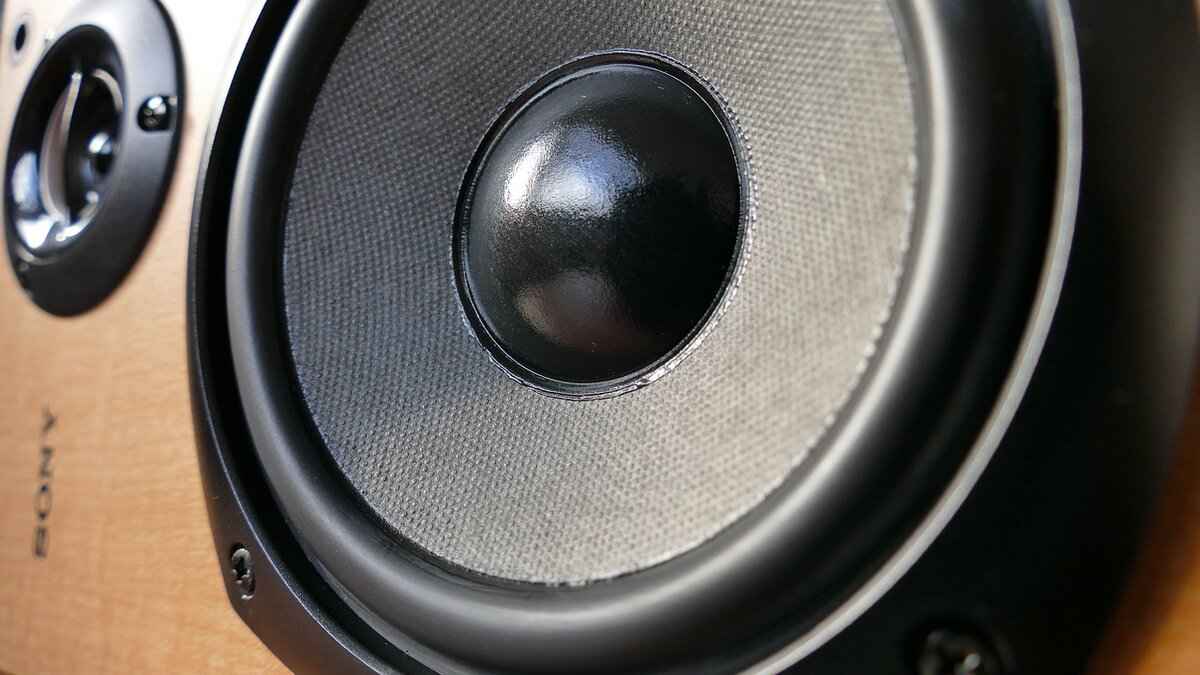
Why is Audio Quality Important in Action Camera Footage?
When it comes to action camera footage, the visual elements often steal the spotlight. However, audio quality plays a pivotal role in transforming your recordings from simple clips into compelling stories. Understanding the significance of audio quality can elevate your action camera footage from amateur to professional, making it essential for storytelling and viewer engagement.
High-quality audio enhances the overall experience for your audience. Imagine watching an exhilarating mountain biking video where you can hear the wind rushing past, the crunch of gravel under tires, and the rider’s breath. These sound elements add depth and realism, immersing viewers in the action. Conversely, poor audio can detract from even the most stunning visuals, leading to a disjointed and unengaging experience.
Moreover, audio quality is crucial for effective communication. If you’re vlogging or sharing insights during your adventures, clear audio ensures your message is conveyed without distractions. In contrast, muffled or distorted sound can confuse viewers, resulting in lost interest. Thus, investing time in understanding and improving audio quality is not just beneficial; it’s essential for anyone serious about their action camera footage.
Additionally, good audio quality can enhance your content’s searchability online. Videos with clear sound are more likely to be shared, liked, and commented on, increasing their visibility on platforms like YouTube and social media. This can lead to a larger audience and greater engagement, which is invaluable for content creators looking to grow their channels.
To achieve professional audio quality, you should consider several factors:
- Microphone Selection: Choosing the right microphone can make a significant difference. While built-in microphones are convenient, they often fail to capture the nuances of your environment.
- Recording Environment: The setting in which you record can impact audio quality. Recording in a quiet, controlled environment will yield better results than in a noisy, bustling area.
- Post-Production Editing: Utilizing audio editing software can help refine your sound, removing unwanted noise and enhancing clarity.
In conclusion, while the visuals of your action camera footage may be stunning, the audio quality is equally important. By prioritizing audio, you can create a more immersive experience that captivates your audience and elevates your content to a professional level.
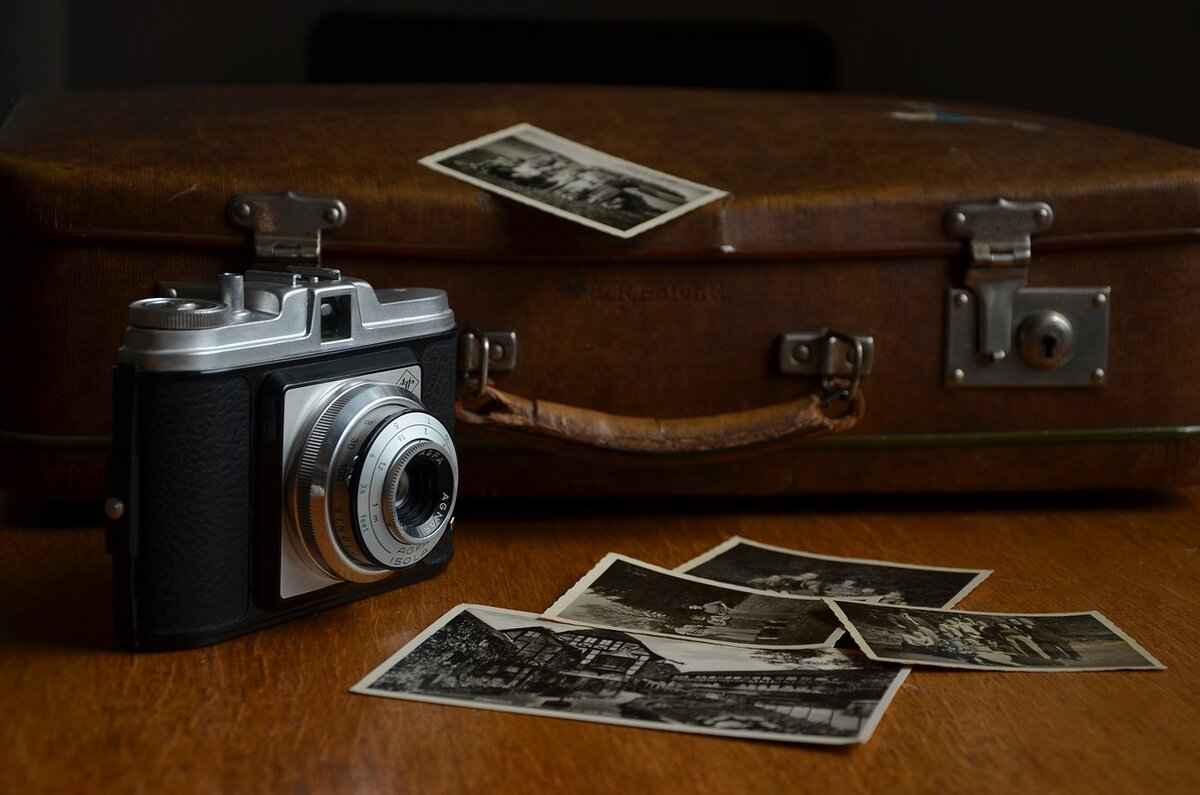
What Types of Microphones Are Best for Action Cameras?
When it comes to capturing high-quality audio with action cameras, selecting the appropriate microphone is essential. The right microphone can significantly enhance sound clarity, making your recordings more engaging and professional. This section delves into the various types of microphones that are best suited for different recording scenarios, ensuring you get the most out of your audio experience.
Understanding the different types of microphones available is crucial for achieving optimal audio quality. Here are some popular microphone types to consider:
- Dynamic Microphones: These are robust and excellent for live sound situations. They can handle high sound pressure levels, making them suitable for environments with loud noises. However, they may not capture subtle sounds as effectively as other types.
- Condenser Microphones: Known for their sensitivity and wide frequency response, condenser microphones are perfect for capturing detailed audio. They are ideal for interviews or quiet environments but might require phantom power, which some action cameras do not provide.
- Lavalier Microphones: Also known as lapel mics, lavalier microphones are small, clip-on devices that are perfect for hands-free recording. They are particularly useful for interviews and vlogs, providing clear audio without being intrusive.
- Shotgun Microphones: These highly directional microphones are designed to capture sound from a specific source while minimizing background noise. They are excellent for outdoor recording, where wind and other environmental sounds might interfere.
- USB Microphones: While not typically used directly with action cameras, USB microphones can be connected to computers for post-production audio editing. They are useful for voiceovers and podcasts, allowing for professional-quality recordings.
Each microphone type has its strengths and weaknesses, and the choice largely depends on your recording environment and the desired audio outcome. For instance, if you’re filming action sports, a dynamic microphone might be best due to its durability. Conversely, for a quiet interview setting, a condenser microphone would capture the nuances of the conversation.
When deciding on a microphone, you must consider whether to use an external or internal microphone. Internal microphones are built into action cameras and are convenient for quick setups. However, they often fall short in terms of audio quality, especially in noisy environments. External microphones, on the other hand, can provide superior sound quality and flexibility.
Using an external microphone allows you to position the mic closer to the sound source, which can dramatically improve clarity. For example, if you’re recording a vlog, placing a lavalier microphone near your mouth can help eliminate background noise and enhance your voice’s presence.
To further enhance your audio recording capabilities, consider investing in microphone accessories:
- Windshields: These are essential for reducing wind noise during outdoor recordings. A good windshield can significantly improve audio quality in blustery conditions.
- Shock Mounts: These help isolate the microphone from vibrations and handling noise, ensuring cleaner audio capture during dynamic activities.
- Audio Recorders: Using an external audio recorder can give you more control over your recordings, allowing for higher quality sound and additional features such as multiple track recording.
In conclusion, choosing the right microphone for your action camera is vital for achieving clear and professional audio. By understanding the various types of microphones available and their respective advantages, you can make informed decisions that elevate your recording quality. Whether you opt for a dynamic, condenser, or shotgun microphone, the right choice will ensure that your audio complements your stunning visuals, creating an engaging experience for your audience.
External vs. Internal Microphones
When it comes to audio recording with action cameras, one of the key decisions you’ll face is whether to use an external or internal microphone. Understanding the differences between these two options can significantly impact your recording quality and overall experience.
Internal microphones are built directly into the action camera. They are designed for convenience, allowing users to record audio without needing additional equipment. However, their limitations can affect audio quality, especially in challenging environments.
- Portability: Internal microphones eliminate the need for extra gear, making them ideal for spontaneous recordings.
- Ease of Use: Simply turn on your camera, and you’re ready to record; no setup is necessary.
- Cost-Effective: Using the built-in microphone saves money, as you won’t need to purchase additional equipment.
While internal microphones offer certain advantages, they also come with drawbacks:
- Sound Quality: Internal microphones often struggle with clarity, especially in noisy environments.
- Limited Directionality: They typically capture sound from all directions, which can lead to unwanted background noise.
- Wind Noise: Outdoor recordings can suffer from wind interference, resulting in poor audio quality.
External microphones are separate devices that connect to your action camera. They come in various types, each designed for specific recording situations. This flexibility can greatly enhance your audio quality.
- Superior Sound Quality: External microphones are often designed to capture clearer and more detailed audio.
- Directional Options: Many external mics can be directional, focusing on specific sound sources while minimizing background noise.
- Adaptability: They can be placed closer to the sound source, allowing for better audio capture in various environments.
Despite their advantages, external microphones also come with challenges:
- Increased Setup Time: You’ll need to spend time setting up and connecting the microphone.
- Cost: High-quality external microphones can be expensive, adding to your overall recording budget.
- Portability Issues: Carrying additional gear can be cumbersome, especially during outdoor activities.
The choice between external and internal microphones ultimately depends on your specific needs and recording environment. If you’re looking for convenience and spontaneity, an internal microphone may suffice. However, for professional-grade audio and versatility, investing in an external microphone is advisable.
By evaluating your recording scenarios and understanding the strengths and weaknesses of both microphone types, you can make an informed decision that enhances your audio quality and overall video experience.
Benefits of Using External Microphones
When it comes to capturing high-quality audio with action cameras, the choice of microphone can make a significant difference. External microphones are often favored by professionals and enthusiasts alike for their enhanced sound quality and versatility. In this section, we will delve into the , highlighting how they can elevate your audio recording experience.
One of the primary advantages of external microphones is their ability to provide superior sound quality. Unlike internal microphones, which are typically built into the camera body, external microphones are designed specifically for audio capture. This specialized design allows them to pick up sound more accurately, resulting in clearer and more detailed recordings. Whether you are recording interviews, nature sounds, or action sequences, external microphones can significantly improve the overall audio quality.
Another key benefit is the flexibility in placement. External microphones can be positioned closer to the sound source, minimizing background noise and focusing on the desired audio. This adaptability is especially useful in dynamic environments where sound sources may vary in distance and direction. For instance, if you are filming a sporting event, placing a microphone near the action can capture the sounds of the event more effectively than a camera’s built-in mic.
Moreover, external microphones come in various types, each suited for different recording scenarios. For example, shotgun microphones are ideal for directional sound capture, while lavalier microphones are perfect for interviews and presentations. This variety allows users to select the best microphone type for their specific needs, enhancing the overall quality of their recordings.
In addition to improved sound quality and placement options, external microphones often feature advanced technologies that help in reducing unwanted noise. Many models are equipped with windshields and noise-canceling capabilities, which can significantly enhance audio clarity, especially in outdoor settings. By minimizing wind noise and other ambient sounds, these microphones ensure that the primary audio source remains clear and prominent.
Furthermore, using an external microphone can provide better control over audio levels. Many external mics come with adjustable gain settings, allowing users to fine-tune the input levels according to the recording environment. This control is crucial for preventing distortion and ensuring that the audio remains balanced, even when capturing loud sounds.
Lastly, investing in external microphones can also enhance the overall production value of your videos. High-quality audio is often just as important as high-quality visuals, and using external microphones can help achieve professional-grade results. This attention to detail can make your content more engaging and enjoyable for viewers, ultimately contributing to a more successful project.
In summary, the benefits of using external microphones for action camera recordings are numerous. From superior sound quality and flexible placement to advanced noise reduction technologies, external microphones offer significant advantages that can enhance your audio recording experience. Whether you are a seasoned professional or a passionate hobbyist, incorporating an external microphone into your setup can lead to remarkable improvements in your audio quality.
Limitations of Internal Microphones
When it comes to capturing stunning visuals with your action camera, audio quality is often overlooked. Many users rely on the internal microphones of their devices for convenience. However, this choice can significantly impact the overall quality of your footage, especially in challenging environments.
While internal microphones are built into action cameras for ease of use, they come with several limitations that can hinder your audio recording experience. One of the primary drawbacks is their inability to effectively isolate sound in noisy environments. Action cameras are designed to be compact and lightweight, which often means that their built-in microphones lack the necessary directionality and sensitivity found in external microphones.
- Background Noise: Internal microphones tend to pick up unwanted background noise, which can overwhelm the primary audio source. This is particularly problematic in bustling environments or during high-energy activities.
- Limited Frequency Response: These microphones often have a narrower frequency response range, which can result in a less dynamic sound. This limitation can make voices sound flat and reduce the overall richness of the audio.
- Sound Distortion: When subjected to high sound levels, internal microphones may distort audio, leading to a loss of clarity. This distortion is often noticeable during action-packed scenes where sounds peak.
Moreover, the placement of internal microphones can also be a significant factor. Since they are often located on the body of the camera, they can easily be obstructed or affected by wind noise, which further degrades audio quality. In contrast, external microphones can be positioned closer to the sound source, allowing for clearer and more focused recordings.
To overcome the limitations of internal microphones, many professional videographers and content creators opt for external microphones. These devices offer several advantages:
- Enhanced Sound Quality: External microphones typically provide superior audio quality, capturing a broader range of frequencies and delivering clearer sound.
- Custom Placement: The ability to position external microphones closer to the subject allows for better sound isolation and minimizes background noise.
- Variety of Options: There are various types of external microphones available, including shotgun mics, lavalier mics, and handheld options, each tailored for specific recording scenarios.
In conclusion, while internal microphones in action cameras offer convenience, they often fall short in delivering high-quality audio, particularly in noisy environments. By investing in an external microphone, you can significantly enhance your audio recordings, ensuring that your action-packed footage is complemented by crystal-clear sound. Whether you are filming outdoor adventures or engaging interviews, the right audio setup can make all the difference in capturing the essence of your story.
Popular Microphone Options for Action Cameras
When it comes to recording high-quality audio with action cameras, selecting the right microphone is essential. The audio quality can significantly impact the overall production value of your videos, making it crucial to choose a microphone that fits your specific needs. In this section, we will explore some of the popular microphone options for action cameras, detailing their unique features and suitability for various applications.
- Rode VideoMic Me
This compact shotgun microphone is ideal for action cameras. It features a directional pickup pattern, ensuring that it captures sound directly in front of the camera while minimizing background noise. Its lightweight design makes it easy to carry, and it connects directly to the camera’s audio input.
- Zoom H1n Handy Recorder
A versatile option, the Zoom H1n can be used as both an external microphone and a standalone recorder. It offers high-quality stereo sound and various recording formats. Its built-in microphones are excellent for capturing ambient sounds, making it a great choice for vlogging and outdoor adventures.
- Shure MV88
This digital stereo condenser microphone connects directly to your action camera via a Lightning connector. It features adjustable stereo width and a built-in equalizer, allowing for customization based on your recording environment. The MV88 is perfect for capturing high-quality audio in dynamic situations.
- Rode Wireless GO
The Rode Wireless GO is an ultra-compact wireless microphone system that provides freedom of movement while recording. It consists of a transmitter with a built-in microphone and a receiver that connects to your action camera. This setup is perfect for interviews or capturing audio from a distance.
- Deity V-Mic D3 Pro
This shotgun microphone is praised for its versatility and excellent sound quality. It features a built-in battery with a long life, making it suitable for extended recording sessions. The adjustable gain control allows you to adapt to different environments, ensuring optimal audio capture.
Each of these microphones offers distinct advantages, making them suitable for various recording scenarios. For instance, the Rode VideoMic Me is perfect for those who prioritize portability and ease of use, while the Zoom H1n excels in versatility and sound quality. The choice of microphone ultimately depends on your specific requirements, such as the recording environment, desired audio quality, and whether you need a wireless solution.
In addition to these options, it’s essential to consider factors like wind noise reduction and compatibility with your action camera. Many of these microphones come with accessories like windshields or deadcats, which can significantly improve audio quality during outdoor recordings.
Ultimately, investing in a quality microphone can elevate your action camera footage, allowing for a more professional sound that enhances viewer engagement. By understanding the features and benefits of each microphone option, you can make an informed decision that aligns with your recording needs.

What Settings Should You Use for Optimal Audio Recording?
When it comes to capturing high-quality audio with your action camera, configuring your settings correctly is essential. The right adjustments can make a significant difference in the clarity and overall quality of your recordings. This section will explore the key settings you should consider to optimize your audio recording experience.
One of the most critical aspects of audio recording is audio gain. This setting controls the sensitivity of the microphone, allowing you to adjust how much sound is captured. If the gain is set too high, you may experience distortion, while a low gain can result in weak audio. To find the right balance, conduct a few test recordings and listen for clarity and balance. Aim for a setting that captures the nuances of your environment without overwhelming background noise.
Another important factor is the sampling rate and bit depth. The sampling rate determines how often the audio is sampled per second, while the bit depth affects the dynamic range of the recording. A common setting for high-quality audio is a sampling rate of 48 kHz with a bit depth of 24 bits. This combination captures a wider range of frequencies and provides greater detail, making your recordings sound more professional.
Many action cameras come equipped with audio filters that can help enhance your recordings. These filters can reduce background noise, eliminate hum, and improve overall sound quality. Experiment with different filters to see which ones work best for your recording environment. For instance, a low-cut filter can help remove unwanted low-frequency sounds, such as wind noise, while a high-pass filter can enhance vocal clarity.
Monitoring your audio levels in real-time is crucial for achieving optimal sound quality. Use headphones to listen to the audio as you record, allowing you to catch any issues immediately. Many action cameras offer audio level meters that indicate whether the sound is too loud or too soft. Aim to keep your levels in the green zone for the best results.
Every recording environment is unique, so it’s essential to experiment with different settings to find what works best for you. Take the time to test various combinations of gain, sampling rates, and filters. Keep a log of your settings and the results to help you refine your approach. Over time, you’ll develop a better understanding of how to achieve the best audio quality for your specific needs.
By paying attention to these key settings, you can significantly enhance the audio quality of your action camera recordings. Whether you’re capturing the sounds of nature or the excitement of an adventure, the right configurations will help you create professional-quality audio that complements your stunning visuals.
Audio Gain Settings
When it comes to capturing high-quality audio with your action camera, one of the most critical factors is the . Adjusting these settings can significantly enhance the clarity of your recordings, ensuring that sound levels are balanced and distortion is minimized. This article delves into the importance of audio gain and provides tips on how to optimize your settings for the best results.
Audio gain refers to the amplification of the audio signal. If set too low, your recordings may sound weak and lack presence. Conversely, if the gain is set too high, it can lead to clipping and distortion, which detracts from the listening experience. By carefully adjusting the audio gain, you can achieve a more professional sound, making your footage more engaging and enjoyable for viewers.
- Understand Your Environment: The background noise level can greatly affect your recordings. In a quiet setting, you may not need much gain, while noisy environments may require higher settings.
- Use Test Recordings: Before starting your main recording, conduct short test recordings to find the ideal gain level. Listen back to ensure clarity and balance.
- Monitor Levels: Utilize audio meters if available on your camera to keep an eye on the levels. Aim for a consistent level without peaking into the red zone.
1. Ignoring Background Noise: Always consider the noise around you.2. Not Testing: Failing to do test recordings can lead to poor audio quality.3. Over-Amplifying: Setting gain too high will cause distortion.
Properly adjusted audio gain settings can lead to several significant benefits:
- Enhanced Clarity: Clearer sound allows viewers to better connect with the content.
- Improved Balance: Well-balanced audio ensures that dialogue and ambient sounds coexist harmoniously.
- Professional Quality: High-quality audio elevates the overall production value of your footage.
While some adjustments can be made in post-production, it is always best to get the audio right during recording. Overly distorted audio cannot be fully corrected, and low-gain recordings may still lack the necessary presence, even with enhancement tools. Therefore, focus on achieving the best possible audio quality from the outset.
In summary, adjusting the audio gain settings on your action camera is a vital step towards capturing professional-quality sound. By understanding how gain works, testing different levels, and being mindful of your recording environment, you can significantly enhance the audio experience of your footage. Remember, great audio not only complements your visuals but also plays a crucial role in storytelling and viewer engagement.
Sampling Rate and Bit Depth
When it comes to recording high-quality audio, especially with action cameras, sampling rate and bit depth play crucial roles in determining the overall sound fidelity. Understanding these concepts can significantly enhance your recording capabilities and ensure that your audio captures the full spectrum of sound.
The sampling rate refers to the number of samples of audio recorded per second, measured in Hertz (Hz). A higher sampling rate allows for a better representation of the original sound wave, which is essential for capturing the nuances in audio. For instance, a common sampling rate for CD-quality audio is 44.1 kHz, which means the audio is sampled 44,100 times per second. This rate is generally sufficient for most applications, but for high-resolution audio, rates like 96 kHz or even 192 kHz can be used to capture more detail.
Bit depth refers to the number of bits used to represent each audio sample. It affects the dynamic range of the audio, which is the difference between the quietest and loudest sounds that can be captured. A common bit depth is 16-bit, which provides a dynamic range of about 96 decibels (dB). For professional audio recordings, a 24-bit depth is often preferred, as it offers a dynamic range of around 144 dB, allowing for greater detail in both soft and loud passages.
Choosing the appropriate sampling rate and bit depth depends on the specific requirements of your recording situation. Here are some considerations:
- Type of Content: If you’re recording music or sound effects, a higher sampling rate and bit depth are beneficial. For spoken word or casual recordings, standard settings may suffice.
- Playback Medium: Consider where your audio will be played. For example, streaming platforms often compress audio, so high settings may not be necessary.
- Storage Space: Higher sampling rates and bit depths result in larger file sizes. Ensure you have adequate storage for your recordings.
To optimize your action camera settings for audio recordings, follow these practical tips:
- Experiment with Settings: Test various combinations of sampling rates and bit depths to find the best fit for your specific recording environment.
- Monitor Audio Levels: Use headphones to monitor audio in real-time, ensuring that levels are balanced and avoiding distortion.
- Post-Processing: Consider using audio editing software to adjust levels and enhance sound quality after recording.
In conclusion, selecting the right sampling rate and bit depth is essential for achieving high-quality audio recordings with your action camera. By understanding the importance of these settings and applying them thoughtfully, you can significantly improve the fidelity of your audio, capturing the full range of sound and enhancing your overall storytelling capabilities.
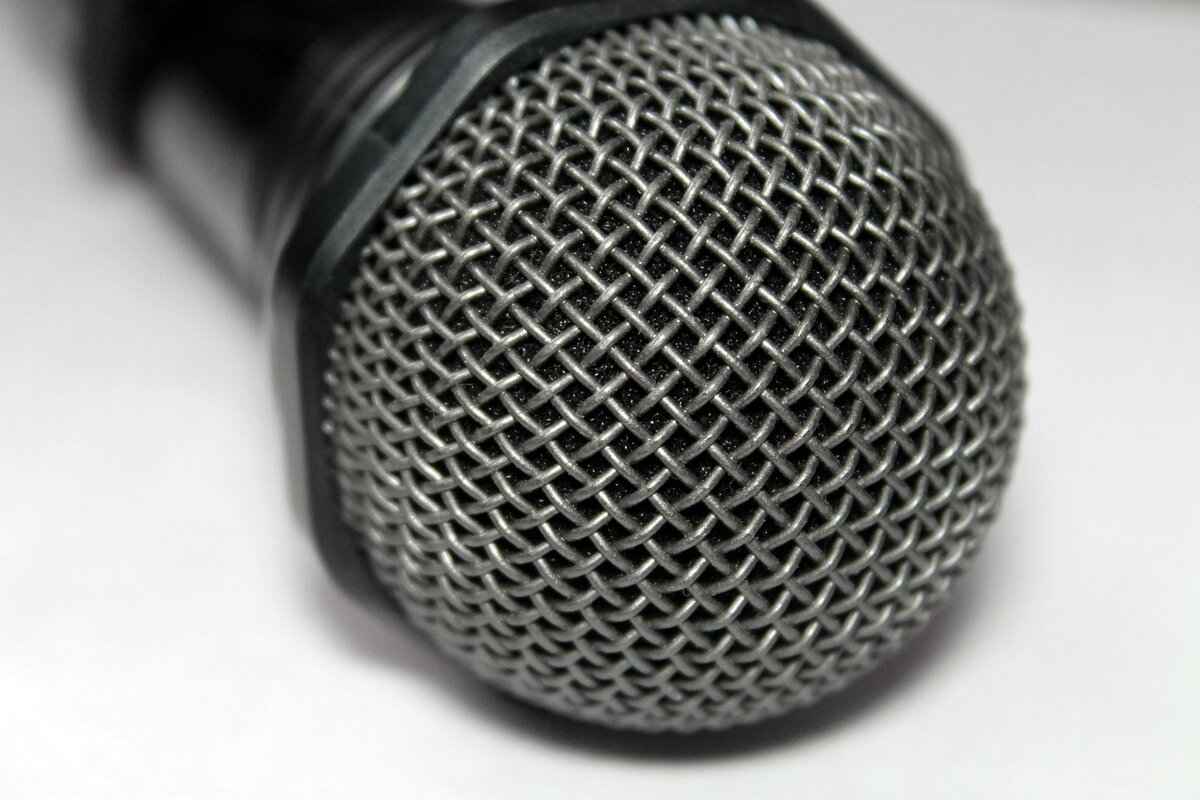
How to Reduce Wind Noise in Your Recordings?
When recording audio outdoors, wind noise can be a significant challenge, often overshadowing the primary sounds you wish to capture. This section delves into effective strategies to minimize wind interference, ensuring that your recordings maintain their clarity and quality.
Wind noise can distort audio quality, making it difficult for listeners to engage with your content. By implementing strategies to reduce this interference, you can enhance the overall listening experience and maintain the integrity of your message.
Several tools and accessories are available to help reduce wind noise effectively:
- Windshields: These are foam covers that fit over your microphone, providing a first line of defense against wind interference.
- Deadcats: A type of windshield made from faux fur, deadcats are particularly effective in high-wind conditions, offering superior protection.
- Microphone Positioning: Adjusting the angle and placement of your microphone can significantly reduce wind exposure.
Choosing the right location for your recordings plays a vital role in minimizing wind noise:
- Seek Shelter: Whenever possible, find natural barriers such as trees, buildings, or hills that can block the wind.
- Time of Day: Wind speeds can vary throughout the day; early mornings or late afternoons may offer calmer conditions.
- Use of Directional Microphones: These microphones are designed to pick up sound from a specific direction, which can help isolate your desired audio from wind noise.
In addition to using the right tools and choosing the best location, certain recording techniques can further reduce wind noise:
- Monitor Wind Conditions: Before starting your recording, assess the wind conditions. If it’s too windy, consider postponing your session.
- Adjust Your Settings: Lowering your microphone’s gain can help minimize the impact of wind noise.
- Use Headphones: Monitoring your audio in real-time can help you detect wind noise early, allowing you to make necessary adjustments.
Even with the best precautions, some wind noise may still find its way into your recordings. Here are some editing techniques to consider:
- Noise Reduction Software: Use audio editing software with noise reduction features to filter out unwanted wind sounds.
- Equalization: Adjusting the frequency levels can help diminish the impact of wind noise without compromising the overall audio quality.
- Layering Audio: If possible, layer your primary audio with background sounds or music to mask any residual wind noise.
By implementing these strategies, you can significantly improve the audio quality of your outdoor recordings, ensuring that your audience enjoys a clear and engaging listening experience. Remember, preparation is key—invest time in the right tools, techniques, and editing processes to achieve professional-grade audio.
Using Windshields and Deadcats
When it comes to capturing high-quality audio during outdoor activities, wind noise can be a significant challenge. In this section, we will delve into the importance of using windshields and deadcats as essential accessories that can dramatically improve audio clarity in blustery conditions.
Windshields are protective covers designed to reduce wind noise that can interfere with audio recordings. They come in various forms, including foam covers and furry fabric, which is where the term deadcat originates. These accessories are particularly useful for action cameras, which are often used in windy environments.
- Minimize Wind Noise: Wind can create disruptive sounds that overshadow your primary audio. Windshields and deadcats help to dampen these noises, allowing for clearer recordings.
- Improved Audio Quality: By reducing wind interference, these accessories enhance the overall quality of your audio, making it more pleasant for listeners.
- Versatility: Whether you’re recording at the beach, in the mountains, or during a windy day, windshields and deadcats can adapt to various conditions, ensuring your audio remains consistent.
Windshields function by creating a barrier between the microphone and the wind. The material used, whether foam or fur, is designed to absorb and deflect wind, thus minimizing its impact on the microphone’s sensitivity. This results in a more accurate capture of the intended sound, whether it be dialogue, music, or ambient noise.
When selecting a windshield or deadcat, consider the following:
- Microphone Size: Ensure that the windshield fits your microphone snugly to prevent any wind from entering the gaps.
- Material: Opt for a material that suits your recording environment. For example, furry deadcats are excellent for high winds, while foam windshields may suffice in milder conditions.
- Ease of Use: Choose a windshield that is easy to install and remove, allowing for quick adjustments during your recording sessions.
To maximize the effectiveness of your windshields and deadcats, consider the following tips:
- Test Before Recording: Always conduct a sound check before starting your recording to ensure that the windshield is performing as expected.
- Adjust Microphone Position: Experiment with the placement of your microphone relative to the wind direction. Sometimes, turning the microphone away from the wind can further reduce noise.
- Combine with Other Techniques: For best results, use windshields and deadcats in conjunction with sheltered recording locations or other noise reduction techniques.
In summary, utilizing windshields and deadcats is a crucial step in achieving high-quality audio recordings in challenging outdoor conditions. By understanding their function and selecting the right accessories, you can significantly enhance your audio clarity and overall production quality.
Choosing the Right Recording Location
When it comes to capturing high-quality audio with an action camera, selecting the right recording location is crucial. The environment in which you record can significantly influence the sound quality of your footage, especially in outdoor settings where wind noise can be a persistent challenge. In this section, we will explore effective strategies for choosing a sheltered recording spot to help mitigate wind noise, ensuring cleaner audio capture.
Wind noise can easily overpower the desired sounds you want to capture, making your recordings less enjoyable for viewers. Therefore, finding a location that offers some protection from the elements is essential. Here are some tips to consider:
- Look for Natural Barriers: Seek out locations that have natural windbreaks such as trees, hills, or buildings. These structures can help shield your microphone from direct wind, allowing for clearer sound capture.
- Avoid Open Areas: Recording in open fields or elevated locations can expose your microphone to strong gusts of wind. Instead, opt for spots that are more enclosed or sheltered to minimize wind interference.
- Consider the Time of Day: Wind patterns can vary throughout the day. Early mornings or late afternoons often experience calmer winds, making these times ideal for outdoor recording.
- Test the Environment: Before starting your recording, conduct a quick test to assess the wind conditions. This can involve simply listening to the sound of the wind in your chosen spot to determine if it’s manageable.
In addition to these strategies, it’s also beneficial to be aware of the microphone placement. Positioning your microphone closer to the sound source can help capture clearer audio while reducing the impact of wind noise. If possible, use a directional microphone that focuses on sounds coming from a specific direction, further enhancing audio clarity.
Another effective method to reduce wind noise is to use windshields or deadcats. These accessories are designed to cover the microphone and can significantly diminish wind interference, allowing for a more polished audio output. Investing in a quality windshield can be a game-changer for outdoor recordings.
Lastly, consider the overall acoustics of your chosen location. Environments with hard surfaces can create echoes and reverberations that may negatively affect audio quality. Look for areas with soft ground or foliage that can absorb sound, providing a more natural recording environment.
By taking the time to carefully select your recording location and employing the right techniques, you can greatly improve the quality of your audio recordings. Remember, the goal is to create an engaging listening experience for your audience, and a well-chosen spot plays a pivotal role in achieving that.
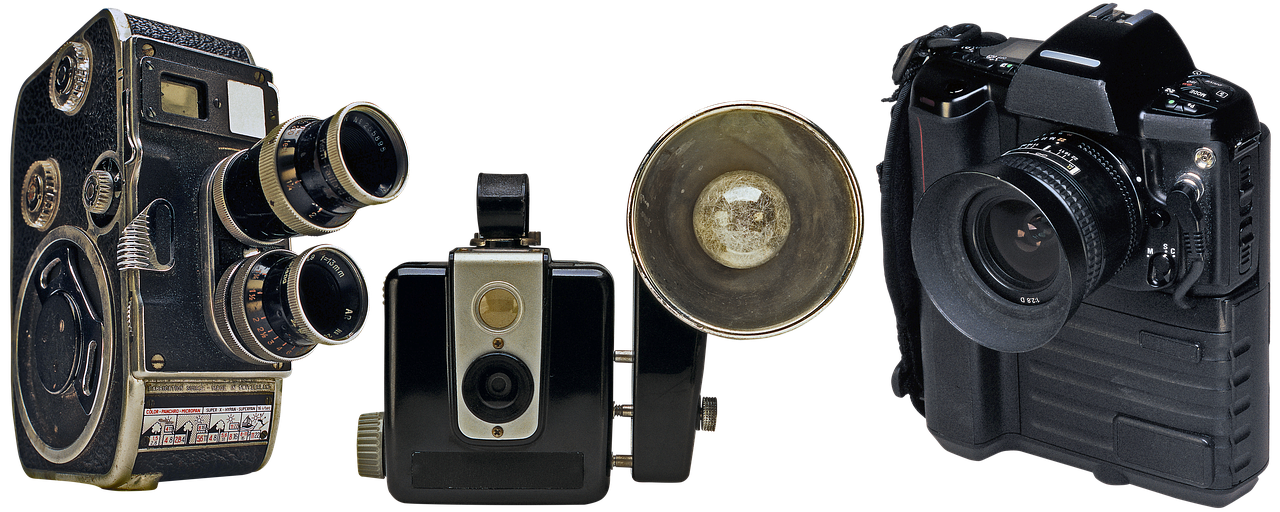
What Accessories Can Enhance Your Audio Recording Setup?
When it comes to capturing high-quality audio with your action camera, relying solely on a microphone may not be enough. To truly enhance your audio recording setup, consider incorporating a range of accessories that can significantly improve the overall sound quality and recording experience. This section will delve into some essential tools that can elevate your audio recordings to the next level.
Accessories play a vital role in ensuring that your audio recordings are clear and professional. They can help mitigate common issues like background noise, wind interference, and handling sounds, which can detract from the quality of your recordings. Here are some key accessories to consider:
- External Audio Recorders: Utilizing an external audio recorder can provide you with higher sound fidelity and greater control over your audio settings. These devices often allow for higher bit rates and sampling rates, which can significantly enhance the clarity of your recordings.
- Windshields and Deadcats: When recording outdoors, wind noise can be a major issue. Windshields, often made from foam or fur, can effectively reduce wind interference, allowing for clearer sound capture. Deadcats, specifically designed for outdoor use, are particularly effective in windy conditions.
- Camera Mounts and Stabilizers: To minimize handling noise, investing in camera mounts and stabilizers is crucial. These tools can help keep your camera steady, resulting in cleaner audio recordings, especially during action-packed scenarios.
- Shock Mounts: These mounts are designed to absorb vibrations and shocks that can occur during recording. By isolating the microphone from handling noise, shock mounts can significantly improve audio quality.
- Cables and Adapters: High-quality cables and appropriate adapters are essential for connecting microphones and audio devices to your action camera. Poor quality cables can introduce unwanted noise and degrade sound quality.
- Headphones: Monitoring your audio in real-time is crucial. A good pair of headphones allows you to listen to your recordings as they happen, enabling you to catch issues like distortion or background noise immediately.
Selecting the right accessories depends on your specific recording environment and goals. For instance, if you frequently record in windy locations, investing in high-quality windshields should be a priority. Conversely, if you require greater audio control, an external audio recorder may be the best choice. Always consider the compatibility of accessories with your action camera and the specific audio requirements of your projects.
Many reputable brands offer a range of audio accessories tailored for action cameras. Researching user reviews and expert recommendations can help you make informed decisions. Online marketplaces, specialized camera stores, and audio equipment retailers are excellent places to start your search.
In conclusion, enhancing your audio recording setup with the right accessories can make a significant difference in the quality of your recordings. By investing in tools like external recorders, windshields, and stabilizers, you can ensure that your action camera footage not only looks great but sounds professional as well.
Audio Recorders
When it comes to capturing high-quality audio, using an external audio recorder can significantly enhance your recording capabilities. Unlike internal microphones that come with action cameras, external recorders provide a multitude of benefits that can elevate your sound quality and overall production value.
External audio recorders offer superior sound quality compared to built-in options. They are designed with advanced technology that captures a wider frequency range and reduces noise interference, ensuring that your recordings are crisp and clear. This is particularly important in environments where background noise can be a significant issue.
One of the key advantages of using an external audio recorder is the greater control it provides over your recordings. With features such as adjustable gain levels and various input options, you can tailor your audio settings to suit your unique recording environment. This level of customization is crucial for achieving professional results, especially in dynamic situations.
External audio recorders are incredibly versatile. They can be used in various settings, whether you’re filming action sports, interviews, or nature sounds. Many models come equipped with multiple input options, allowing you to connect different types of microphones, such as lavalier mics for interviews or shotgun mics for directional sound capture. This flexibility ensures that you can adapt to any recording scenario effortlessly.
Another benefit of using an external audio recorder is the potential for extended battery life. Many professional-grade recorders are designed to last longer than the internal batteries of action cameras. This means you can record for extended periods without worrying about running out of power, making them ideal for long shoots or remote locations.
Using an external audio recorder also simplifies the post-production process. Since these devices typically produce higher-quality audio files, you spend less time correcting issues like noise reduction or equalization. This efficiency can save you valuable time during editing, allowing you to focus on crafting your final product.
- Zoom H1n: Compact and user-friendly, perfect for beginners.
- Zoom H5: Offers interchangeable mic capsules for versatility.
- Rode Wireless GO II: Ideal for wireless audio capture with exceptional quality.
- Tascam DR-40X: Great for multi-track recording with built-in mics.
Incorporating an external audio recorder into your action camera setup can dramatically improve the quality of your audio recordings. With enhanced sound quality, greater control, and versatility, these devices are invaluable tools for anyone serious about capturing professional-grade audio. Whether you are a seasoned filmmaker or a hobbyist, investing in an external audio recorder will undoubtedly elevate your projects to the next level.
Camera Mounts and Stabilizers
When it comes to capturing high-quality audio with action cameras, camera mounts and stabilizers play a crucial role. These accessories not only enhance the stability of your footage but also significantly reduce handling noise, which is essential for achieving cleaner audio in dynamic recording situations.
Using camera mounts and stabilizers allows for smoother movements during filming, which can greatly impact the quality of your audio. When you move the camera, vibrations and handling noises can be picked up by the microphone, leading to unwanted sounds in your recordings. By minimizing these disturbances, you can focus on capturing the richness of the environment and the nuances of your subject’s voice.
- Tripods: Ideal for stationary shots, these mounts provide a stable base that eliminates handling noise.
- Gimbals: These are motorized stabilizers that help keep your camera steady during movement, reducing the impact of shaky hands.
- Chest Mounts: Perfect for action shots, these allow for hands-free filming while keeping the camera stable against your body.
Stabilizers, particularly gimbals, are designed to counteract unwanted movements. They use advanced technology to keep your camera level, which can be particularly beneficial when recording in fast-paced environments. This technology helps in:
- Reducing vibrations: This ensures that the audio captured is focused and clear, without the interference of handling noise.
- Improving focus: With less camera shake, you can concentrate on capturing the perfect shot without worrying about audio quality.
When selecting a stabilizer, consider the type of shooting you plan to do. For example, if you are filming while running or biking, a handheld gimbal may be the best option. Conversely, for stationary interviews or time-lapses, a tripod might suffice. Always look for features that cater to your specific needs, such as weight capacity and battery life.
To maximize the effectiveness of your camera mounts and stabilizers, ensure that:
- Your microphone is positioned away from any potential noise sources.
- You secure all cables to prevent them from rattling during recording.
- You conduct a sound check before filming to identify any residual noise that may need addressing.
Incorporating camera mounts and stabilizers into your filming setup is a wise investment for anyone serious about improving their audio quality. By reducing handling noise and enhancing stability, these tools allow you to focus on capturing the best possible sound, ultimately leading to a more professional output.
Frequently Asked Questions
- What is the best microphone for action cameras?
The best microphone really depends on your specific needs! For general use, a shotgun microphone is fantastic for capturing focused audio, while a lavalier mic is great for interviews. If you’re looking for versatility, consider a wireless microphone system!
- How do I adjust the audio settings on my action camera?
Adjusting audio settings can be a game-changer! Look for the audio gain settings in your camera’s menu. You want to balance it just right—too high and you’ll get distortion, too low and your audio will be too quiet. Experiment a bit to find that sweet spot!
- Can I use my action camera for professional audio recording?
Absolutely! With the right microphone and settings, your action camera can capture surprisingly high-quality audio. Just remember to consider your environment and use accessories like windshields to enhance your recordings!
- What can I do about wind noise during outdoor recordings?
Wind noise can be a real nuisance! Using a windshield or deadcat on your microphone can significantly reduce this interference. Additionally, try to position yourself in a more sheltered area to help minimize wind impact.
- Are external audio recorders necessary for action cameras?
While not strictly necessary, external audio recorders can greatly enhance your audio quality and give you more control over your recordings. They’re especially useful for professional setups where audio clarity is paramount!

